Technologies
iPhone 15 Pro Max Camera vs. Galaxy S23 Ultra: Smartphone Shootout
We put Samsung’s and Apple’s best phones up against each other to see which can take better photos.
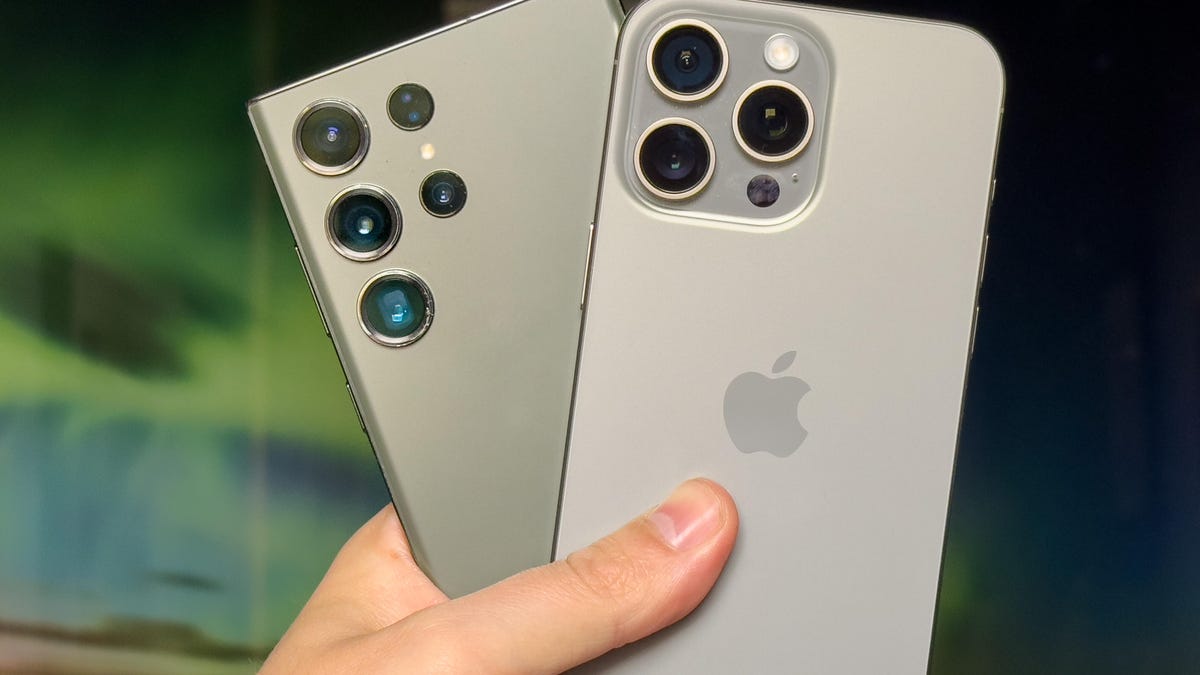
The iPhone 15 Pro Max packs one of the most capable cameras seen on any phone. Its main, 48-megapixel image sensor takes stunning photos, while its telephoto lens has been bumped up to 5x, making it great for taking more zoomed-in shots of distant subjects. But it isn’t the only great camera phone to buy. Samsung’s Galaxy S23 Ultra has remained one of our top picks for photographers since it launched earlier this year. It can take great images under any conditions, and its 10x zoom offers even more creative options.
But how do these two phones compare when it comes to photo-shooting prowess? To find out, I put both devices through their paces in a series of tests in London and Edinburgh, including night mode imagery, zoom tests and portrait mode challenges.
Read more: Best camera phone to buy in 2023
The long story short is that both phones are incredibly capable when it comes to taking photos that’ll wow your Instagram followers, but read on to see how each phone fares under different conditions.


Both phones have captured this bright, vibrant scene well with their main cameras. But the iPhone 15 Pro Max has produced more realistic colors in both the sky and in the main building to the left of the scene. The S23 Ultra’s sky looks particularly oversaturated , with a yellow tinge to the scene that I’m less keen on.


It’s the same story when switching to each phone’s wide-angle lens. The S23 Ultra’s shot is more vibrant, but it looks almost unnaturally saturated as a result. The iPhone 15 Pro Max’s shot looks almost a little drab by comparison, but I prefer its more faithful reproduction of colors.


Beyond a slight shift in white balance, there’s very little to choose between either shot here.


I focused closer-up on these pretty pink flowers using the main cameras on each phone, and the iPhone is the clear winner. It’s provided an attractive out-of-focus bokeh to the background, while keeping the subject looking nice and sharp, which helps the foreground flflowers stand out. The S23 Ultra doesn’t have the same depth effect and its colors are extremely saturated. The green leaves to the bottom left of the image in particular look almost toxic against the iPhone’s much more realistic tones.


Color balance isn’t an issue here, with both phones producing well-exposed shots and the vibrant artwork on this bridge looking well-produced in both images.


There’s not a lot of immediate difference here, so I really have to nitpick to draw any conclusion. On the one hand, I slightly prefer the brighter, higher-contrast exposure the S23 Ultra has managed. However, the iPhone 15 Pro Max has a more attractive shallow depth of field, with softer bokeh noticeable on the chairs and light sources in the background. As a result, we can call this one a tie.


Switching to the ultrawide cameras on both phones, the big difference is the shift in white balance on the S23 Ultra. Samsung’s phone has opted for an image with a strong magenta color cast that I’m not particularly keen on. While the iPhone’s shot is a little darker, its color tone is much more accurate.


Both phones have portrait modes that can be used with different lenses but still capture that attractive bokeh effect around your subject. Taken with the standard 1x lenses, the S23’s shot is wider than the iPhone’s, while also producing richer contrast and stronger colors. The iPhone’s looks quite washed out, either due to lens flare or simply through software processing, and the result is disappointing.


Things change when we look at the zoomed-in shots. The iPhone Pro Max’s 5x zoom lens has captured a lovely portrait here, with great exposure and a really natural-looking bokeh around the subject that could easily have been taken on a DSLR with a telephoto zoom. The S23 Ultra’s shot still looks good though, with rich contrast and deep colors.



The iPhone 15 Pro Max’s 5x zoom has delivered a much better-looking shot than the S23 Ultra’s 3x lens, with more natural-looking colors and exposure. Things improve for the S23 Ultra at 10x zoom though, with a far nicer color tone overall, not to mention being able to see more detail on the sign, thanks to the longer zoom range.


The S23 Ultra’s extended zoom range can be beneficial, especially for those occasions where you really want to fill your frame with a distant subject. However, I personally find 5x to be a real sweet spot. It allows me to find more interesting compositions than I could with a wide-angle lens, but without being too restrictive.
That’s why I prefer the iPhone 15 Pro Max in this scenario rather than the Galaxy S23 Ultra’s closer 10x zoom. This largely comes down to personal preference, of course, but I find the iPhone’s zoom (as I did with the Pixel 7 Pro’s 5x zoom) much more useful on a day-to-day basis.
Night mode


Both the iPhone 15 Pro Max and Galaxy S23 Ultra can take excellent shots after dark, and these images from the main camera are fine examples. That said, the S23 Ultra’s image has a more yellow color cast to the image, while the iPhone 15 Pro Max maintains slightly finer details, especially in some of the brickwork on the buildings. The S23 Ultra’s image noise processing has smoothed out some of those details.


That detail smoothing is especially noticeable in this nighttime image of the front of a building. While the iPhone has clearly reproduced the details in the brickwork, with noticeable texture on the sandstone blocks, the S23 Ultra has recognized that texture as image noise and so has attempted to smooth it out. The result is an odd-looking smoothed appearance that lacks any of the realism of the iPhone’s image.


This scene is more of a mixed bag. The S23 Ultra has kept some of the bright highlights under better control, while the iPhone has achieved a brighter sky that gives better separation to the tops of the buildings. I don’t really feel either one is especially better than the other here.


Switching to the ultrawide lenses on both phones, it’s immediately obvious that the iPhone’s image is brighter, both in the sky and in the river below. However, it’s a less detailed image, with the S23 Ultra achieving sharper details on the buildings, better control of highlights and less image noise in the river.


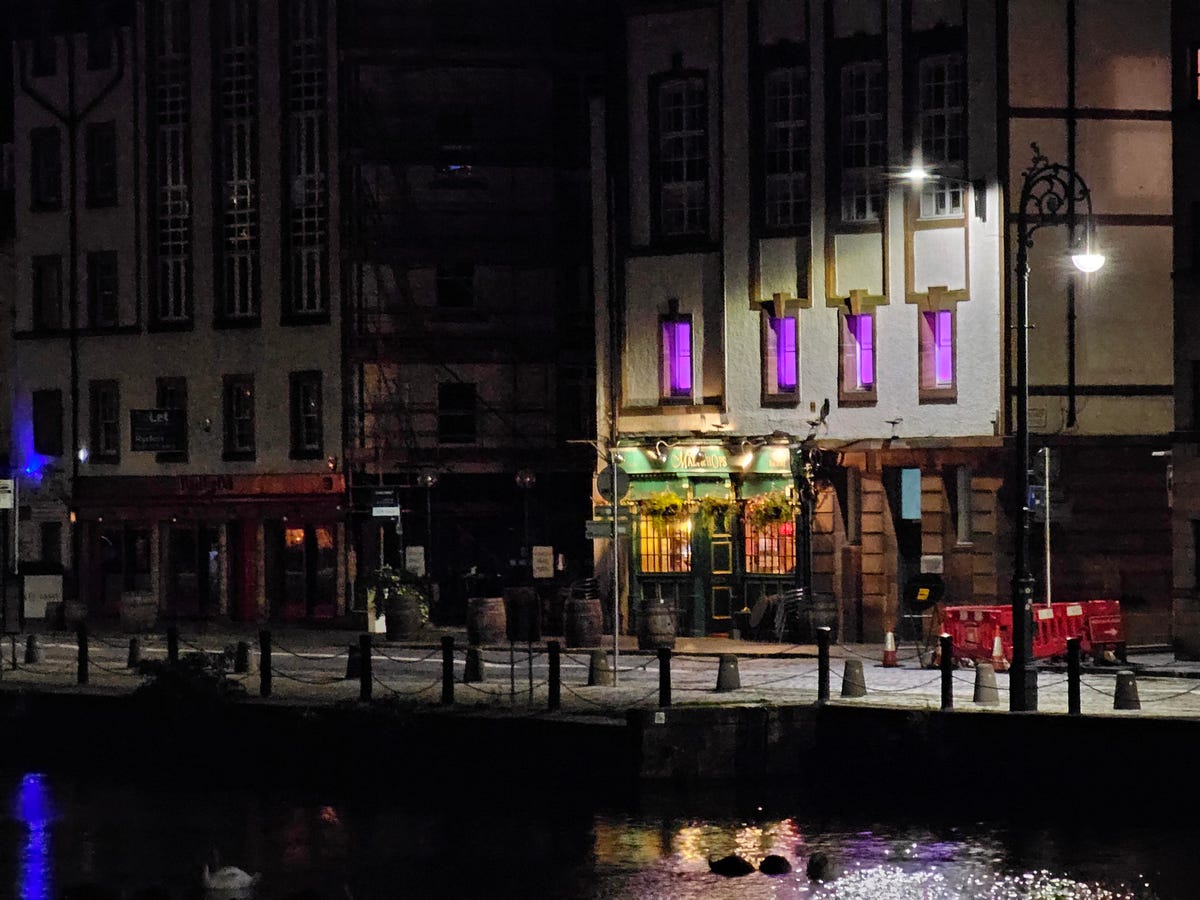
However, I much prefer the iPhone’s 5x zoom shot at night to either the 3x or 10x zoom shots from the S23 Ultra. The iPhone has achieved a pin-sharp image here, with great colors and exposure, with even the bright clock face on the left being clearly visible. At 3x, the S23 Ultra is already losing some detail, and at 10x the image is disappointingly mushy and lacking in detail.


The S23 Ultra’s familiar magenta color cast is visible again in this night mode shot, with the iPhone generally producing more natural tones. Both shots are almost equally bright however, with almost nothing to choose between them in terms of clarity and detail.


While the iPhone’s ultrawide night mode shot isn’t quite as sharp as the S23 Ultra’s, Samsung’s phone suffers from some unpleasant noise artifacts in the sky — green-looking blobs where the digital processing clearly hasn’t performed as it should. It’s a disappointing result for the S23 Ultra here, as its shot is otherwise the better of the two.



The night mode zoom results here are the same as I found in the other test. The iPhone 15 Pro Max’s 5x zoom has produced a sharp and clear image with a good handle on image noise. The 3x shot from the S23 Ultra suffers from unpleasant noise artifacts, and the 10x is extremely muddy and lacking in detail.
iPhone 15 Pro Max vs. Galaxy S23 Ultra: Which takes better photos?
It’s been a very close-fought battle between these two powerhouse phones, and the reality is that either phone is superb for photographers wanting to take beautiful images under any conditions. It’s only when you really study the details of each shot side-by-side that you can you tell much difference. And even then, a lot of those perceived differences are subjective. Still, with both phones costing well into four figures, it’s important to nitpick at these details to make sure your money is well spent.
Overall I prefer the images from the iPhone 15 Pro Max. It delivered more-accurate colors in almost all my tests, with the S23 Ultra frequently producing unrealistic color casts from the auto white balance. Samsung’s phone also produces oversaturated images — something that’s been common on Samsung phones for generations — while the iPhone keeps its colors more true to life.
I also prefer the 5x zoom on the Pro Max, which produces better-looking images than the S23 Ultra’s 3x lens and is generally more useful than the Ultra’s 10x lens. And in night mode, I found the iPhone to deliver overall better-looking shots, especially when using the zoom.
But bear in mind that I’m a professional photographer, so what I value in images is accurate color tone and a more neutral-looking image that I could boost manually with contrast or other adjustments in editing apps. If you prefer more vibrant, contrasty images to share with family and friends straight from your phone, then Samsung’s phone may be the better option.
Technologies
I Tested the Honor Magic 8 Pro and Found a Huge Problem With the Camera
I discovered a catastrophic problem with this phone’s cameras and it needs to be fixed fast.
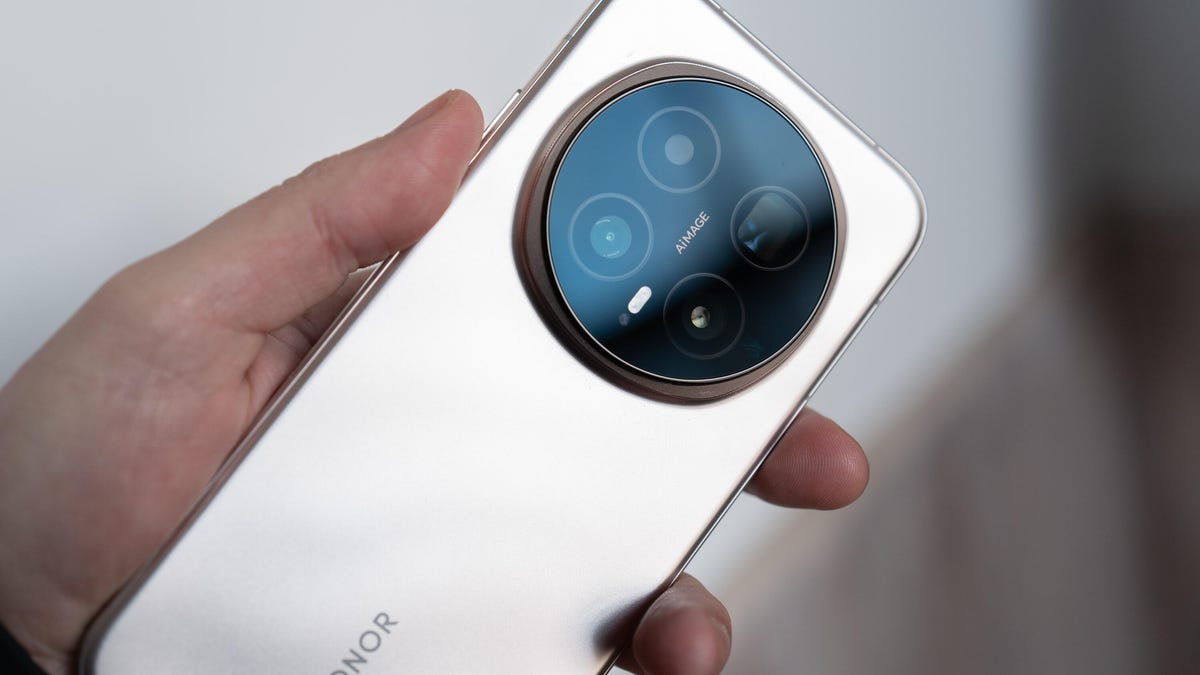
I’ve found a big problem with the Honor Magic 8 Pro’s camera that urgently needs addressing. I’ve taken hundreds of test photos in my weeks with the company’s latest flagship phone, and while plenty of them are perfectly decent, many of the images I’ve taken with the ultrawide lens display horrendous image processing issues around the edges that ruin them completely.
I discovered the issue when I first got the phone late last year, and while it’s had several significant software updates since then, the problems persist. So what’s gone wrong? It’s possible that I’m monumentally unlucky and happen to have been given a broken unit. If so, I fully expect the replacement models I’ll be testing to be free of any issues. Or, maybe it’s a more widespread problem and I’ll see the same issues cropping up again. I personally think it’s more likely to be an issue at the software level, and as such, it could be a simple fix for Honor to push out in the coming days and weeks.
I’ve spoken to Honor about this and, unsurprisingly, the company is keen to say that this isn’t widespread, stating «Our internal investigation confirmed that the issue was limited to an isolated hardware anomaly in that specific early development sample. It doesn’t reflect the hardware or software polish of the final retail units now launching in the European market.» And sure, my test unit was an early non-EU version, but it is also the phone that the company did send me to review. Receiving early prerelease samples is common in the industry and while small hiccups can sometimes be expected, I rarely find such significant problems as this.
Honor is sending additional retail units for further testing and I hope that I’m able to confirm that this isn’t an issue seen on all models. I was prepared to write a full review of this new flagship phone, but these camera issues are severe and raise more questions than answers. I will update this article with more information and my testing results as they become available.
Read more: Best Phone to Buy in 2026
Even if it is an isolated incident, it’s still disappointing to see such significant problems on a new phone, especially a flagship that costs £1,099 in the UK. Honor doesn’t officially sell its phones in the US, but for reference, that price converts to roughly $1,480.
The phone does have some positives. I like its processor performance and display, for example, which I’ll come on to later. But the camera issues I’ve seen mean I can’t recommend buying this phone until it’s clear whether they’re limited to my review device or if they’re issues common across all models.
Let’s take a closer look at what’s going on.
Honor Magic 8 Pro camera troubles
Taken with the camera’s standard zoom, the shot above is fine — there’s a decent amount of detail and the exposure is even overall.
But switch to the ultrawide mode and things go horribly wrong. There’s a vibrant purple fringe around the edge that’s full of image processing artifacts that ruin the shot.
It’s not a subtle problem; it’s a huge red flag that something is very wrong with this phone.
For reference, here’s the iPhone 16 Pro’s ultrawide shot. Notice the difference?
As you can see, it’s not an isolated incident. It seems to be more apparent when there are areas of shadow in the edges. It makes me suspect that the phone is seeing these dark patches and trying — and failing — to brighten them and add detail back into the scene. It’s not dissimilar to the early problems I found on Google’s Pixel 8 Pro, which also struggled with shadow detail, suggesting to me that this is a software fault, rather than a mechanical problem with my unit.
It also doesn’t seem to affect the ultrawide lens when recording video, which again suggests it’s not a hardware issue as I’d expect to see the same problems from the lens in any mode. The downside of that is that it could theoretically affect all models of the Honor Magic 8 Pro. However, the big upside is that software problems can be easily remedied with over-the-air updates.
To be honest, I don’t love the camera elsewhere, either. The image processing has gone overboard in this image, brightening the shadows and trying to rescue the highlights in the background excessively. It’s resulted in an over-processed image that looks unnatural.
The iPhone 16 Pro’s attempt has allowed those shadows to remain what they are — shadows — and I vastly prefer this version as a result.
I’ve also noticed that there can be significant color shifts when switching between the main and ultrawide lenses, which I would again prefer not to see on a camera phone of this price.
However, this could be attributed to the same software processing issues I’ve already discussed, so I’ll have to leave my verdict on the camera for when I’ve done more testing.
On the upside, this shot of the Tennents brewery in Glasgow looks good.
And I like the colors and tones in this sunset scene in Edinburgh. So it’s not all bad — it can take a decent photo sometimes. So what about the rest of the phone?
Honor Magic 8 Pro: Display, performance and battery life
I like the phone’s 6.71-inch display, which is bright and vibrant. It’s lovely for gaming, too, thanks to its max 120Hz refresh rate. It’s powered by Qualcomm’s latest Snapdragon Elite Gen 5 processor, which puts in some of the best scores we’ve ever seen on our benchmark tests for both processor performance and graphics processing.
It certainly feels nippy in everyday use. Games like Genshin Impact, unsurprisingly, played smoothly at max graphics settings. The phone runs on a 6,270-mAh battery, which, while sizable, only gave average results on our battery drain tests. Battery performance sits alongside phones like the Galaxy S25 or Google Pixel 10, but it’s a big step below the iPhone 17 Pro Max or OnePlus 15.
If it feels like I’m glossing over the rest of the phone somewhat, it’s because I am. With the issues I’ve seen so far, it’s possible that there may be other early teething troubles elsewhere, so I’m going to hold off giving any kind of definitive verdict on any part of the phone until I’ve tested more models and have a full appreciation of what the phone is really like to use.
Honor Magic 8 Pro: Should you buy it?
Right now, I absolutely don’t think you should. The issues I’ve seen with the camera are significant and badly need addressing. It could be that it’s a simple software fix that can be rolled out in the coming weeks, or it might be an isolated incident that affects me and me alone. I’ll be retesting on multiple devices and it could be that they’re absolutely fine.
But unless you’re desperate for a new phone today and you absolutely have to have an Honor phone, then I recommend waiting until we’ve got more clarity about how deep these problems lie.
Technologies
Today’s NYT Strands Hints, Answers and Help for Jan. 8 #676
Here are hints and answers for the NYT Strands puzzle for Jan. 8, No. 676.
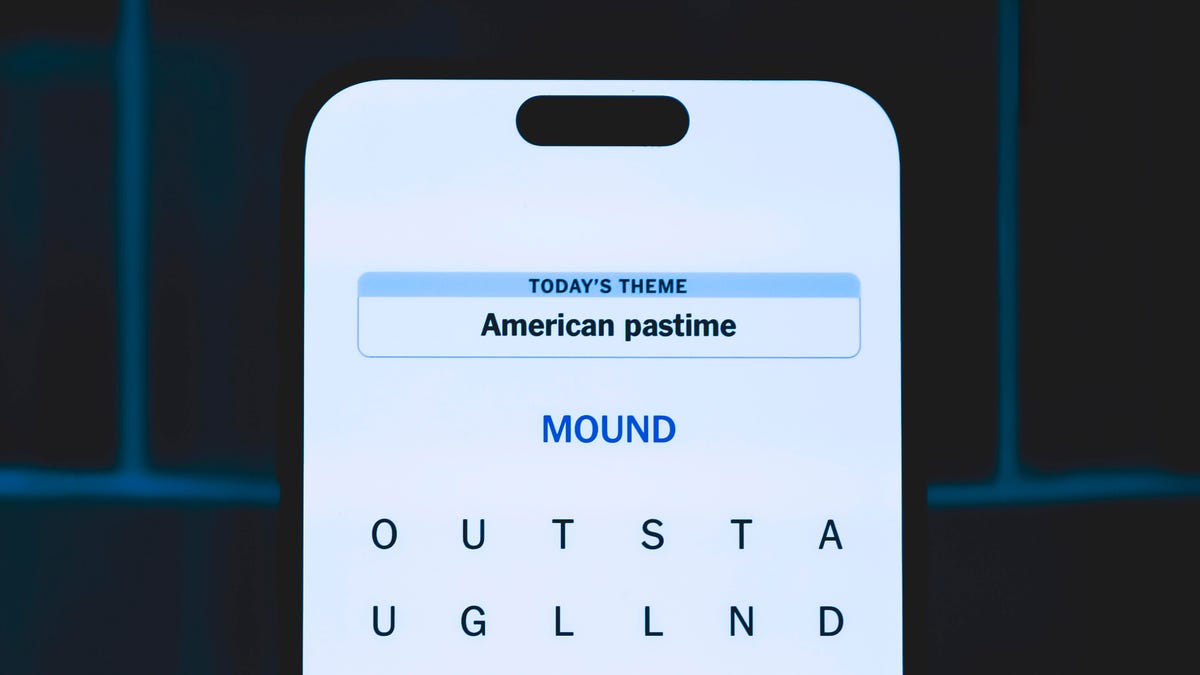
Looking for the most recent Strands answer? Click here for our daily Strands hints, as well as our daily answers and hints for The New York Times Mini Crossword, Wordle, Connections and Connections: Sports Edition puzzles.
Today’s NYT Strands puzzle was almost impossible for me, because it’s all focused on a certain TV show that I have never watched and barely know anything about. (Its fourth season premieres today, if you want to check it out.) If you’re like me, you need hints and answers, so read on.
I go into depth about the rules for Strands in this story.
If you’re looking for today’s Wordle, Connections and Mini Crossword answers, you can visit CNET’s NYT puzzle hints page
Hint for today’s Strands puzzle
Today’s Strands theme is: That’s just reality (TV)
If that doesn’t help you, here’s a clue: Show with plenty of trickery.
Clue words to unlock in-game hints
Your goal is to find hidden words that fit the puzzle’s theme. If you’re stuck, find any words you can. Every time you find three words of four letters or more, Strands will reveal one of the theme words. These are the words I used to get those hints but any words of four or more letters that you find will work:
- SIDE, HIDE, START, TART, FAITH, TENS, BANS, FATE, SILT, CAST, TRAIT
Answers for today’s Strands puzzle
These are the answers that tie into the theme. The goal of the puzzle is to find them all, including the spangram, a theme word that reaches from one side of the puzzle to the other. When you have all of them (I originally thought there were always eight but learned that the number can vary), every letter on the board will be used. Here are the nonspangram answers:
- CASTLE, SHIELD, MISSION, FAITHFUL, BANISHMENT
Today’s Strands spangram
Today’s Strands spangram is THETRAITORS. To find it, start with the T that’s three letters down on the far-left row, and wind across and then down.
Don’t miss any of our unbiased tech content and lab-based reviews. Add CNET as a preferred Google source.
Technologies
Today’s NYT Connections: Sports Edition Hints and Answers for Jan. 8, #472
Here are hints and the answers for the NYT Connections: Sports Edition puzzle for Jan. 8, No. 472.
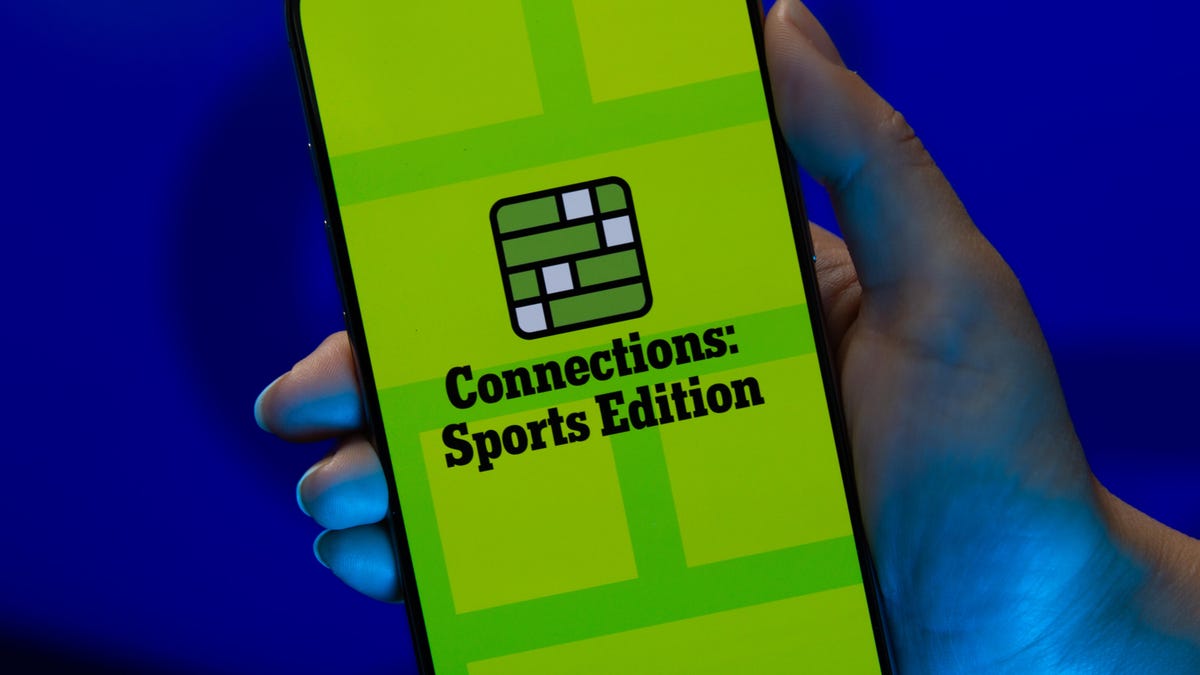
Looking for the most recent regular Connections answers? Click here for today’s Connections hints, as well as our daily answers and hints for The New York Times Mini Crossword, Wordle and Strands puzzles.
Today’s Connections: Sports Edition was a bit of a stumper, though if you recognize famous-athlete names, you might get the purple category right away. And you might have never heard of the blue category topic. (That link is a big spoiler.) If you’re struggling with today’s puzzle but still want to solve it, read on for hints and the answers.
Connections: Sports Edition is published by The Athletic, the subscription-based sports journalism site owned by The Times. It doesn’t appear in the NYT Games app, but it does in The Athletic’s own app. Or you can play it for free online.
Read more: NYT Connections: Sports Edition Puzzle Comes Out of Beta
Hints for today’s Connections: Sports Edition groups
Here are four hints for the groupings in today’s Connections: Sports Edition puzzle, ranked from the easiest yellow group to the tough (and sometimes bizarre) purple group.
Yellow group hint: Sports in our nation’s capital.
Green group hint: Got any Band-Aids?
Blue group hint: Certain basketball league.
Purple group hint: Same first name.
Answers for today’s Connections: Sports Edition groups
Yellow group: A DC athlete.
Green group: Supplies for an athletic trainer.
Blue group: Unrivaled teams.
Purple group: Jerry ____.
Read more: Wordle Cheat Sheet: Here Are the Most Popular Letters Used in English Words
What are today’s Connections: Sports Edition answers?
The yellow words in today’s Connections
The theme is a DC athlete. The four answers are Capital, Commander, Mystic and Wizard.
The green words in today’s Connections
The theme is supplies for an athletic trainer. The four answers are bandages, ice pack, scissors and tape.
The blue words in today’s Connections
The theme is Unrivaled teams. The four answers are Breeze, Laces, Phantom and Vinyl.
The purple words in today’s Connections
The theme is Jerry ____. The four answers are Lucas, Rice, Stackhouse and West.
Don’t miss any of our unbiased tech content and lab-based reviews. Add CNET as a preferred Google source.
-

 Technologies3 года ago
Technologies3 года agoTech Companies Need to Be Held Accountable for Security, Experts Say
-

 Technologies3 года ago
Technologies3 года agoBest Handheld Game Console in 2023
-

 Technologies3 года ago
Technologies3 года agoTighten Up Your VR Game With the Best Head Straps for Quest 2
-

 Technologies4 года ago
Technologies4 года agoBlack Friday 2021: The best deals on TVs, headphones, kitchenware, and more
-

 Technologies4 года ago
Technologies4 года agoGoogle to require vaccinations as Silicon Valley rethinks return-to-office policies
-

 Technologies4 года ago
Technologies4 года agoVerum, Wickr and Threema: next generation secured messengers
-

 Technologies4 года ago
Technologies4 года agoOlivia Harlan Dekker for Verum Messenger
-

 Technologies4 года ago
Technologies4 года agoiPhone 13 event: How to watch Apple’s big announcement tomorrow
